Artist Beth Hopkins explains how she used her experience of researching the Adamson Collection to create an embroidered wall hanging.
A reflection on art in a mental hospital
Beth Hopkinsaverage reading time 4 minutes
- Article
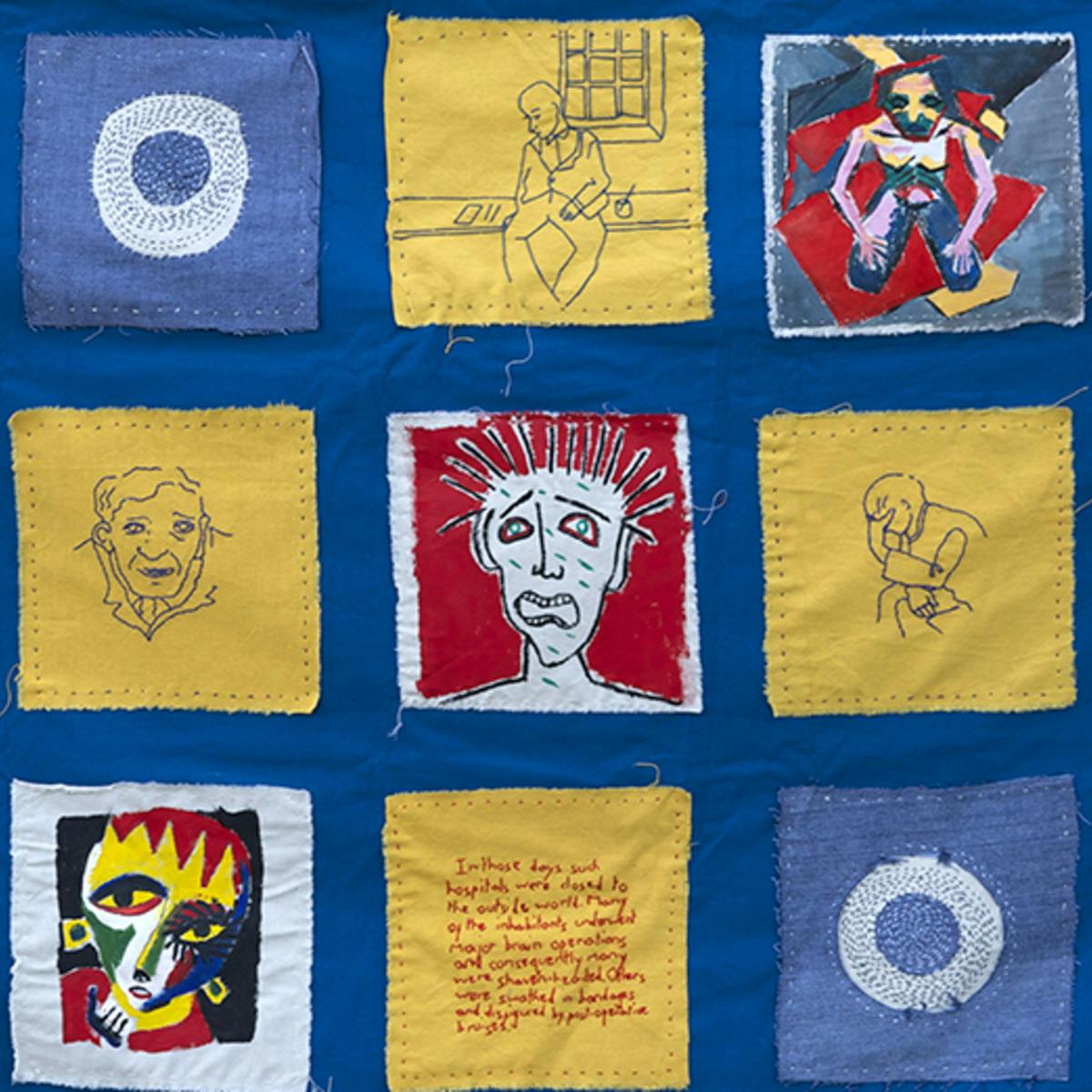
Edward Adamson was one of the first artists to work with patients in a mental hospital. The Adamson Collection at Wellcome consists of his personal papers and artworks by his patients.
Discovering the collection
Researching the collection was a process of following my instincts. I worked without a specific goal in mind, other than to immerse myself in the many artworks. Each new discovery led to the next – Adamson’s patient notebooks led me to his sketches of the patients working in the art studio.
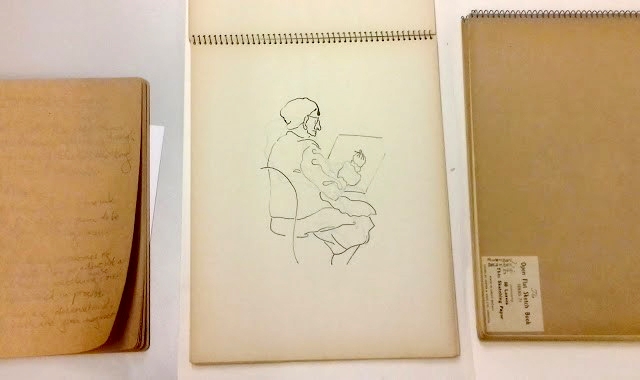
A handwritten notebook and two sketch pads belonging to Edward Adamson.
Adamson described Netherne Hospital in Surrey as completely enclosed – all doors were locked and there was a fence around the grounds. When he first went to Netherne in 1946, he was shocked to see the state of the patients. Lobotomies were still in use. The teeth of the patients were removed, sepsis was believed to be a cause of mental illness, and false teeth were only given out at mealtimes.
The art studio that Adamson created was a sanctuary within the hospital. Patients had no privacy on large wards, so Adamson set out the studio to allow each artist their own private space to work in. He sometimes drew the artists in the studio, painting and drawing. His nine sketchbooks are in the collection.
There are also black-and-white photos of life at Netherne Hospital – however, to protect the identities of the patients, I’m not able to share these. So I made my own sketches, which I can share.
The highlight of my research was seeing the paintings first hand. Each painting is fragile as they were made with whichever materials could be found at the hospital – mostly poster paints on cheap paper. Although the colours have, in many cases, faded, they’re still quite bright.
A large proportion of the artworks are by unnamed artists. Their work stands without any context, other than that they were made at Netherne. In his book, ‘Art as Healing’, Adamson shows the work of a young man experiencing depersonalisation (where the body is felt not to exist, or to lack cohesion). Little else is known about the young man, other than that he eventually recovered and moved to Italy. In the collection, he is called Unknown Artist 272.
Throughout the process, I made my own sketches of the collection. This helped me to absorb the work on a visual level.
In pictures
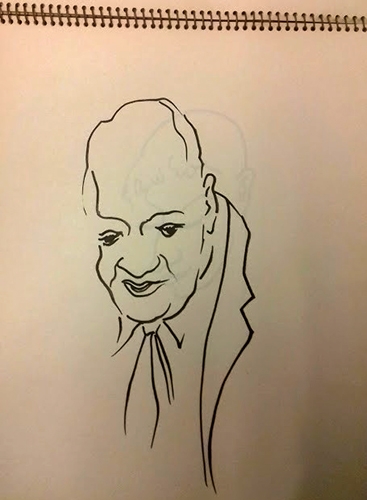
A patient’s face from one of Adamson’s sketch pads.
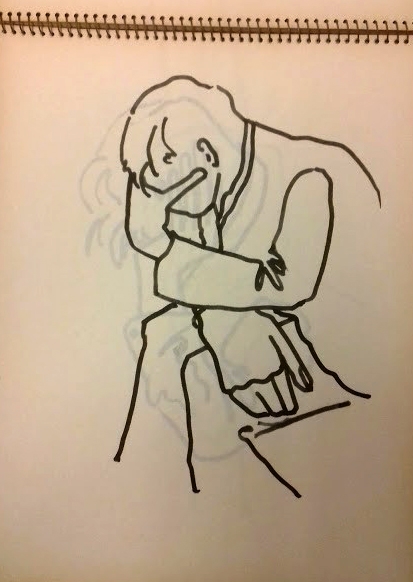
Sketch of a patient from one of Adamson’s sketch pads.
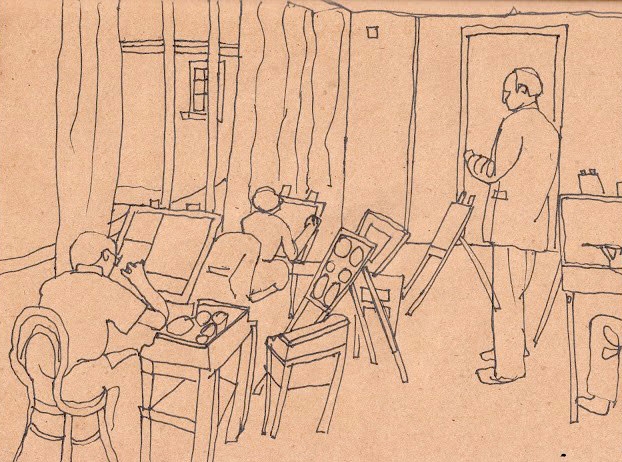
Beth Hopkins’s sketch of the art studio at Netherene, based on a photograph in the Adamson Collection.

Patients artworks on display at Netherene hospital. Beth’s sketch is based on a photograph from the collection.
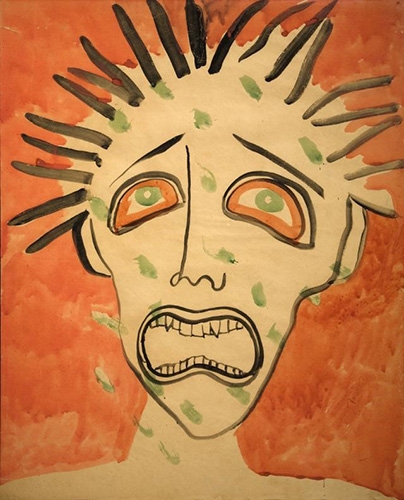
‘A Howling Woman’, an artwork by Mary Bishop who was a patient at Netherene.
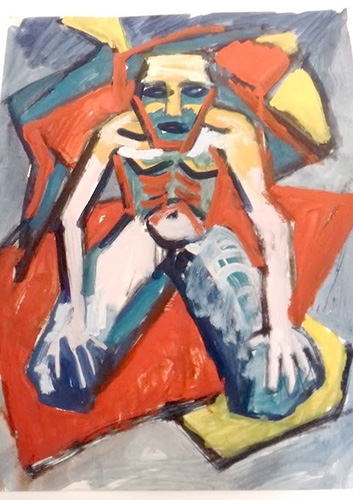
‘The Skeleton Man’, an artwork by Unknown Artist 272.
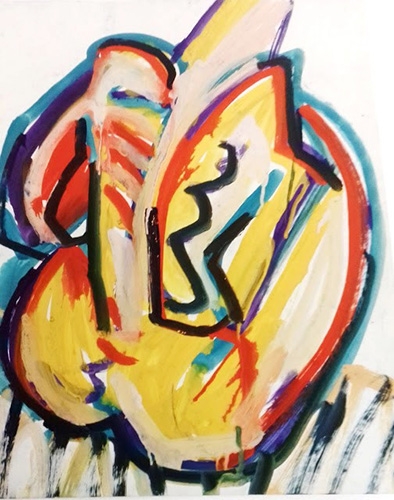
An abstract work by Unknown Artist 272.
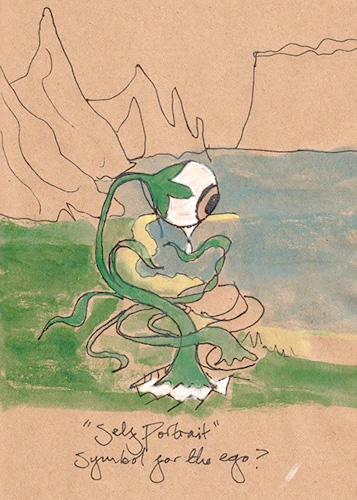
Beth’s sketch of an artwork from the Adamson Collection.
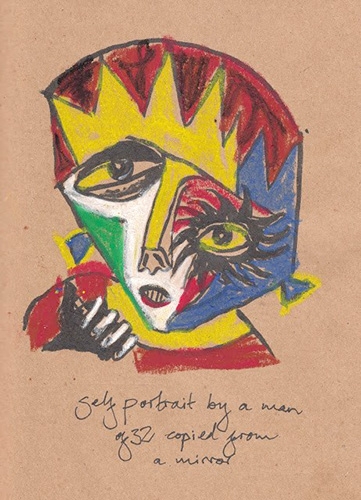
Beth’s sketch of an artwork from the Adamson Collection.
Creating the wall hanging
I decided to make a textile piece to communicate my research. It was a case of drawing together all the pieces of the collection that had affected me the most: Adamson’s sketches of the patients, his notes, and a selection of the paintings.
Many of the paintings were lost or destroyed. In some cases, we do not know the stories or even the names of the people who created the work. The embroidered holes in the hanging represent these gaps, and the gaps these people left in their lives when they were taken to Netherne. It is also a process of trying to mend them, by exploring their work.
Throughout making this hanging, I have been very conscious of the process of selection – notably my choice of certain images over others. I want to be transparent that these images constitute a very small fraction of a vast collection, from which there are many more images yet to be discovered.
I wanted the piece to be colourful, as there is so much colour in the collection. Initially, I thought of this piece as a memorial to the artists of Netherne Hospital, but that doesn’t seem right as there is so much life in their work. Instead, it is a celebration.
In pictures

I began with Edward Adamson’s own notes, both from the archive and his book, ‘The Art of Healing’. I selected passages that spoke to me and embroidered them in red onto yellow fabric.
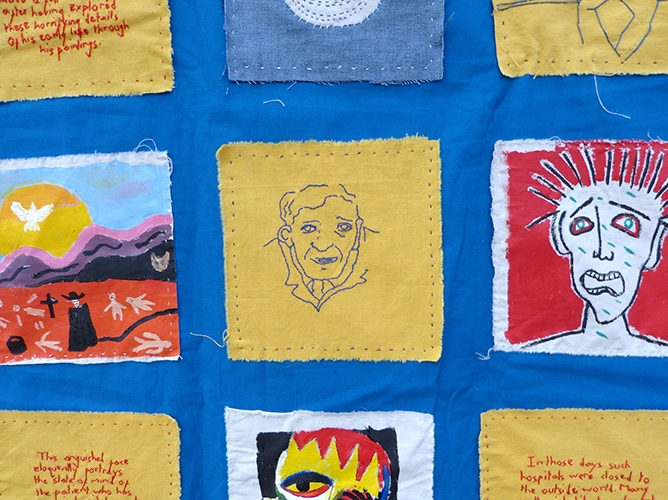
I also wanted to bring in Adamson’s own sketches of the artists in the studio, so I selected several and embroidered them in blue.

I painted some of my favourite paintings from the collection with acrylic onto calico.
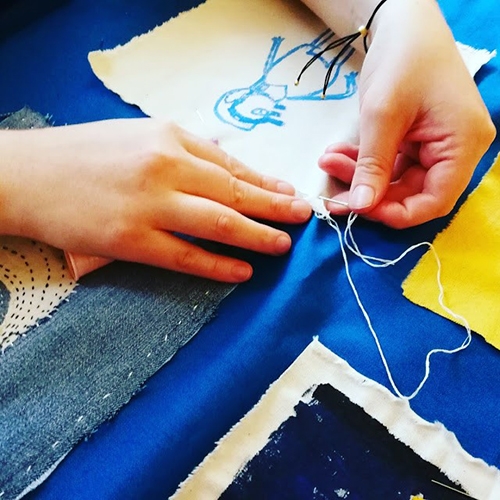
The squares of embroidery and painting were sewn onto a blue background.
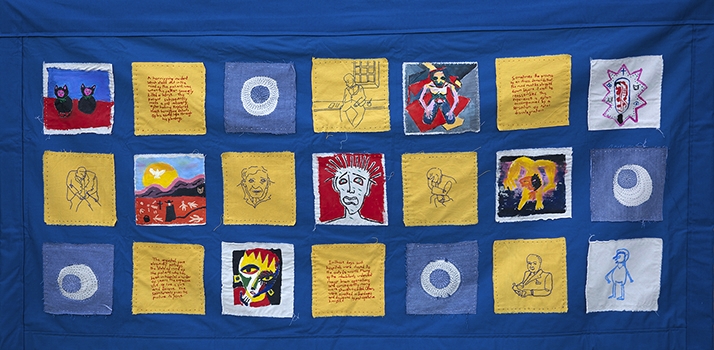
The final hanging also has a sketch of Adamson in the bottom right corner.
About the contributors
Beth Hopkins
Beth Hopkins is an artist based in Surrey. She works in a variety of media, including textiles, drawing and sculpture. Her work explores mental illness, creativity and recovery. You can find out more about Beth's work on her blog.
